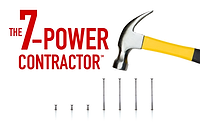I work with companies that do commercial work only, commercial and residential work only, and residential work only.
I also work with these same companies that are service work only, install work only, and those who do both service work and install work.
Wait … it gets more complicated.
Some companies like to distinguish between small install and big install. Or they like to separate add-on replacement, typically for residential or light commercial, from new construction, which can be residential or commercial.
I’m not finished. I work with companies who then throw in the fact they do one trade only, such as plumbing, heating, cooling, electrical, roofing or carpentry. And many more companies now do one, two, three, four or more trades and create separate divisions for each.
The problem is that with so many factions brewing at these companies, divisiveness can spring up — and it usually does.
It gets super-complicated to track what work was done by which of these multiple divisions and who is producing a profit when we borrow labor from one another.
Ultimately, you do either service work or you do install work.
To be clear, the way I define service is a tech goes to a home or business prepared to solve a problem, he presents the solution, sells the repair, does the work and collects the money. The definition of install is a job (typically a day or more of work) sold by someone else. At our company, it was our system engineers (aka salespeople) who sold the jobs. It was the installers who would be expected to put in the equipment within the projected timeframe using the projected material … on time and on budget.
Another problem with creating too many divisions on your company’s organizational chart is it becomes a financial nightmare to track it all.
Worse than tracking all this from a financial standpoint is that too many divisions cause divisiveness with all these subcultures. This whole scenario breeds an unhealthy rivalry for the owner’s attention and the company’s resources.
Moving away from focusing on whether a company does service work or install work, or sorting out a bunch of divisions, this breeding of micro-companies at your business creates a bigger problem. It doesn’t work to the right order of things — What’s the best way to serve the customer first, the company second and the staff third? Nothing can benefit the staff or the company if it doesn’t first benefit the customer. In other words, the staff can’t win at the expense of the customer and the company.
Cross-training
At my own shop years back, we too had guys who were service techs only and guys who were installers only.
But the problem that kept coming up — as it now does with most of my new clients — is we were either swamped with too many service calls or swamped with too much install work and the need to steal guys from each division occasionally to keep up with the demand.
As a matter of fact, I recall it being a divisive culture at my own shop. Understand that our installers worked very hard Monday through Friday from at least 8 a.m. to 5 p.m. and many times very late into the night to complete their work. But when it was freezing cold, broiling hot or flooding, they’d finish their job and wave goodbye to the service techs as they headed home, knowing full well those guys would be out nights, weekends and holidays working crazy hours to keep up with the increased demand.
To make matters worse, the installers, despite constant pleading, would invariably do maddening things such as bury circulators in inaccessible locations or put furnaces in so that the blower access doors became a service nightmare. They probably thought to themselves, “Why should I care? I’m not coming back to do the service.”
The service techs knew how to play the game, too. They’d call for an installer anytime something so simple as cutting a 1-in. piece of pipe needed to be done.
Hey, you know what they say about payback.
Finally, I had enough. I explained that, starting immediately, the service techs were to be cross-trained to do appropriate install work when needed. And I explained to my installers that they would be cross-trained to handle appropriate service work the correct way.
I realized it was really my fault because I hadn’t done cross-training and I hadn’t provided an incentive to the techs that addressed their “What’s in it for me” mindset, so why should they help out?
When they got cross-trained the right way, I paid them more for their additional levels of skills and they loved the added responsibility of moving up the organizational chart.
The other great result was the inter-company divisiveness began to disappear.
We had more capable hands on deck for when the stuff hit the fan on service or we were getting backlogged on install work. For the first time, the installers actually installed stuff with access in mind just because they knew they might now have to come back and work on the equipment. And service techs knew they would be required to do simple install tasks that they could no longer dump on installers anymore.
It was lovely!
I’m not suggesting you push this change until you have documented procedures for how you do your service and install work. Get a training center or at least use your own building and home to work on. This is the only way to teach your service techs and installers how to do the work the right way. I’m suggesting that if you commit to this path, your dispatch nightmares and workflow issues will be greatly reduced.
Plus, your company will start acting more like a team if you do this the right way!





